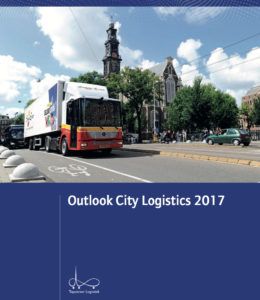City Logistics comprises of a vast variety of supply networks, each with its own service demands driven by the particular wishes of the end-customer. This heterogeneity is reflected in the wide variation in the means of transport used, from cargo bikes to 18-metre truck-trailer combinations.
A multitude of independent external trends and drivers each bring about their own changes, now and in the future, but they create business opportunities, as well. With City Logistics being so heterogeneous, the route to meeting all the many challenges differs from segment to segment like construction logistics, HoReCa, parcel and retail.
The Annual Outlook Citylogistics (by the Topsector Logistiek and Connekt) combines data, assumptions and reasoning to elaborate likely paths forward per segment: a view, based on the Dutch situation, about how to achieve the various goals while taking all relevant factors into due account, including economic viability. The purpose of the Outlook is to help structure a complex issue that is currently being debated by numerous stakeholders.
The key in structuring a complex discussions is to make the assumptions explicit: if assumptions are changed, the likely paths will change, too. Different views on an outcome usually can be traced back to a few key assumptions. Tracking the developments of these key assumptions in more detail helps to determine the likelihood of a path.
The interesting and challenging task ahead is to refine and improve the assumptions and add new data as shared knowledge. After several iterations, the result will be a shared vision on how to accelerate innovations in City Logistics in the coming years. Everybody is welcome to share their ideas.
You can download this Annual Outlook here.

